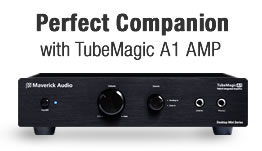In this digital age, we know almost every kind music format comes in a digital format such as: CD, MP3, AAC and etc. However, no matter what the source is, all audio play back ends up at an analog device such as speakers and headphones. Therefore, no matter how high your digital music file’s bit rate is, it will have to be converted to an analog audio signal before you can hear it. The device that does the converting is called a “Digital-to-Analog Converter”, in short, “DAC”.
But wait; isn’t DAC already included in the audio devices? Why do I need a standalone DAC?
The answer is simple, standalone DACs offer the easiest and probably the cheapest way to upgrade your music listening experience. This is because the “built-in” DAC that is in most audio devices is not good enough. Let’s take a computer sound card for an example: the cost of the DAC in 99% of sound cards is less than $1. For $1, how good can the digital-to-analog conversion be? Not to mention the “noisy” power supply in the computer, the signal interference, the “non-audio grade” components, etc… As the result, the audio output on computer is noisy, lacking in clarity and not very transparent.

The DAC used in high-end sound card: Sound Blaster X-Fi Fatal1ty.
Unfortunately, this is also the case in most other audio devices such as: DVD player, Blu-ray player, network media player and laptops.
We are all too focused on the “digital” specifications, and forget that the “digital-to-analog converting” part is just as important as the digital part, and the DAC is the key element to the sound quality. A properly designed external DAC will greatly enhance your music listening experience, it is not an assumption, it is a fact.
You are welcome to leave your comments on this article, please visit our blog

